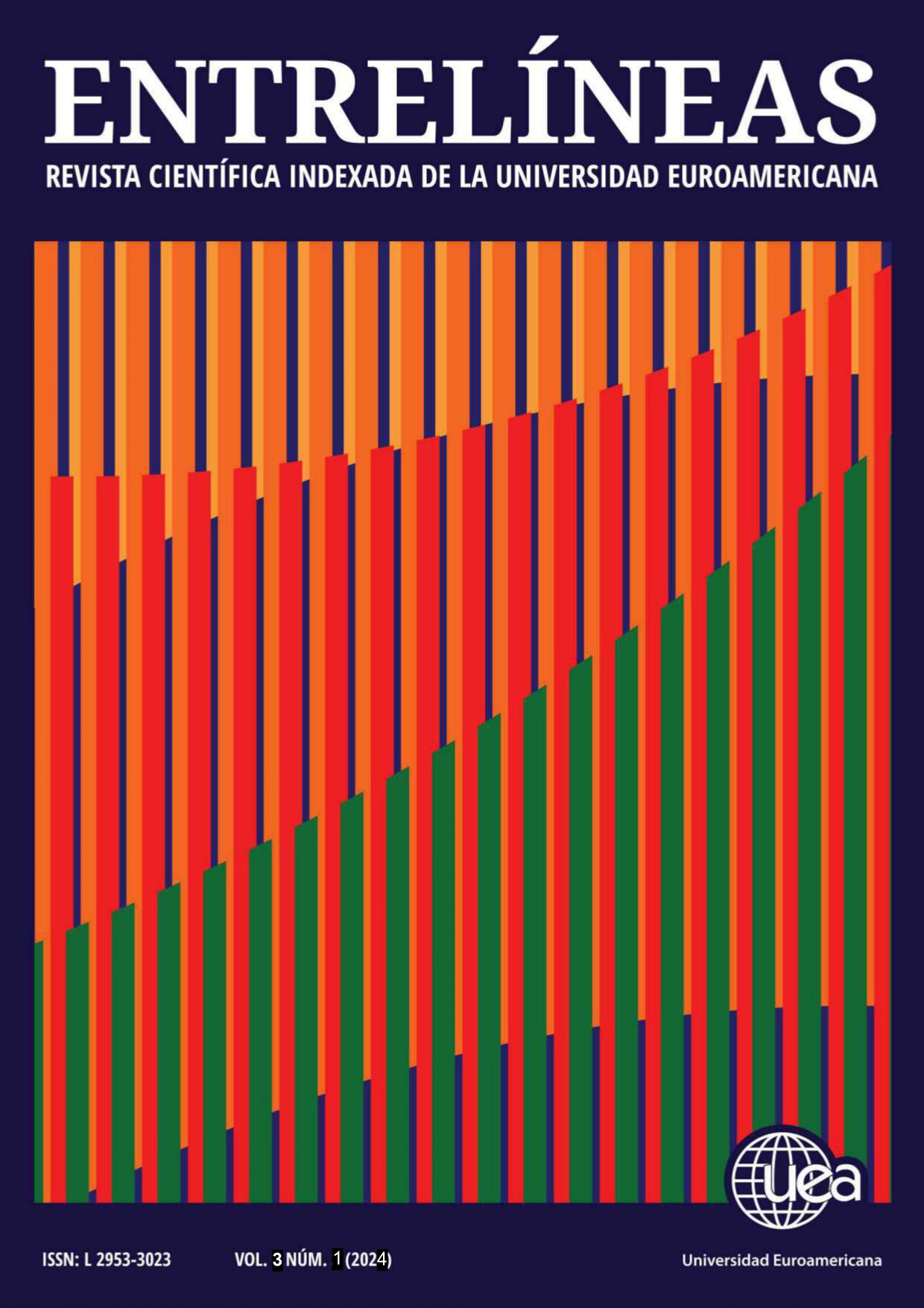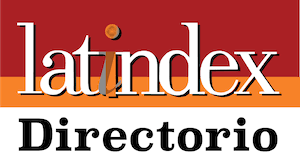Trends and strategies in contemporary university teaching with the application of artificial intelligence
DOI:
https://doi.org/10.56368/Entrelineas311Keywords:
educational technologies, artificial intelligence, personalized teaching, automated assessment, collaborative LearningAbstract
With the objective of identifying and describing some of the most relevant trends and strategies in contemporary university didactics, a qualitative and cross-sectional study was carried out reviewing the literature from 2001 to 2024. This analysis covered the evolution of automation and examined the use of artificial intelligence as a support factor for didactic processes in online education. As a result, four trends and three strategies that integrate artificial intelligence into teaching approaches were identified. It is concluded that strategies such as personalized learning, automated assessment and the use of chatbots that use artificial intelligence are current trends, designed to adapt to virtual education and improve the effectiveness of the educational process.
Downloads
References
Bradáč, V., Smolka, P., Kotyrba, M., & Průdek, T. (2022). Design of an intelligent tutoring system to create a personalized study plan using expert systems. Applied Sciences, 12(12), 6236. https://doi.org/10.3390/app12126236
California State University San Marcos. (2022). Introduction to Trends and Issues. https://www.studocu.com/en-us/document/california-state-university-san-marcos/sales-management/introduction-to-trends-and-issues/21816357
Eibanna, A. (2022). Artificial Intelligence in E-learning. In Skolera. https://blog.skolera.com/artificial-intelligence-in-e-learning/
Frana, P. L. (2018). Telematics and the early history of international digital information flows. IEEE Annals of the History of Computing, 40(2), 32-47. https://doi.org/10.1109/MAHC.2018.02292144
García-Chitiva, M. D. P., & Suárez Guerrero, C. (2019). Estado de la investigación sobre la colaboración en Entornos Virtuales de Aprendizaje. Pixel-Bit: Revista de Medios y Educación, 56, 169-191. https://doi.org/10.12795/pixelbit.2019.i56.09
García-Peñalvo, F. J. (2005). Estado actual de los sistemas e-learning. Education in the knowledge society (EKS), 6(2). https://revistas.usal.es/index.php/eks/article/download/18184/18502
García-Peñalvo, F.J. (2024). Cómo afecta la inteligencia artificial generativa a los procesos de evaluación. Cuadernos de Pedagogía, (549), 1-7. https://revistas.usal.es/index.php/eks/article/download/18184/18502
Hidalgo Suárez, C. G., Llanos Mosquera, J. M., & Bucheli Guerrero, V. A. (2021). Una revisión sistemática sobre aula invertida y aprendizaje colaborativo apoyados en inteligencia artificial para el aprendizaje de programación. Tecnura, 25(69), 196-214. https://doi.org/10.14483/22487638.16934
Hwang, G. J., Xie, H., Wah, B. W., & Gašević, D. (2020). Vision, challenges, roles and research issues of Artificial Intelligence in Education. Computers and Education: Artificial Intelligence, 1, 100001. https://doi.org/10.1016/j.caeai.2020.100001
Kabudi, T., Pappas, I., & Olsen, D. H. (2021). AI-enabled adaptive learning systems: A systematic mapping of the literature. Computers and Education: Artificial Intelligence, 2, 100017. https://doi.org/10.1016/j.caeai.2021.100017
Lévano-Francia, L., Sánchez Diaz, S., Guillén-Aparicio, P., Tello-Cabello, S., Herrera-Paico, N., & Collantes-Inga, Z. (2019). Competencias digitales y educación. Propósitos y representaciones, 7(2), 569-588. http://dx.doi.org/10.20511/pyr2019.v7n2.329
Maghsudi, S., Lan, A., Xu, J., & van Der Schaar, M. (2021). Personalized education in the artificial intelligence era: what to expect next. IEEE Signal Processing Magazine, 38(3), 37-50. https://arxiv.org/pdf/2101.10074
Mahala, A. (2024). The Integration of Artificial Intelligence in E-Learning: Opportunities and Challenges. Seagull Journals, 1(2), 7-19. https://www.seagulljournals.com/VolumeArticles/FullTextPDF/53_Research_Paper.pdf
Mallart i Navarra, J. (2001) Didáctica: concepto, objeto y finalidades. En Sepúlveda, Félix & Rajadell, Núria (Coords.) Didáctica general para psicopedagogos. UNED, pp. 23-57. https://bit.ly/45HmxIe
Míguez Palermo, M. (2005). El núcleo de una estrategia didáctica universitaria: motivación y comprensión. Revista ieRed: Revista Electrónica de la Red de Investigación Educativa, 1(3), 1-11. https://bit.ly/3zlS1aT
Neumann, A. T., Arndt, T., Köbis, L., Meissner, R., Martin, A., de Lange, P., ... & Wollersheim, H. W. (2021). Chatbots as a tool to scale mentoring processes: Individually supporting self-study in higher education. Frontiers in artificial intelligence, 4, 668220. https://doi.org/10.3389/frai.2021.668220
Orlich, D. C., Harder, R. J., Callahan, R. C., Trevisan, M. S. T., & Brown, A. H. (2010). Teaching strategies: A guide to effective instruction. Wadsworth, Cengage Learning.
Pedro, F., Subosa, M., Rivas, A., & Valverde, P. (2019). Artificial intelligence in education: Challenges and opportunities for sustainable development. UNESCO.
Peters, O. (2002). Distance education in transition: New trends and challenges. Bis Verlag.
Rodríguez Illera, J. L. (2001). Aprendizaje colaborativo en entornos virtuales. Anuario de psicología/The UB Journal of psychology, 63-76. https://www.raco.cat/index.php/AnuarioPsicologia/article/download/61669/88436
Roos, S. (2018). Chatbots in education: A passing trend or a valuable pedagogical tool? Uppsala University.
Shum, S. B., & Ferguson, R. (2012). Social learning analytics. Journal of educational technology & society, 15(3), 3-26. https://acortar.link/5iyVBO
Stella Serrano, C. (2023). La llegada de la inteligencia artificial y el problema de la evaluación en la docencia universitaria. El sistema educativo en crisis. Encuentros Multidisciplinarios, (74), 1-15. http://hdl.handle.net/10486/711916
Sun, A., & Chen, X. (2016). Online education and its effective practice: A research review. Journal of information technology education: Research, 15, 157-190. https://acortar.link/8Qdzyt
Xia, X. & Li, X. (2022). Artificial Intelligence for Higher Education Development and Teaching Skills. Wireless Communications and Mobile Computing, 1-10. https://doi.org/10.1155/2022/7614337
Yu, S., & Lu, Y. (2021). An introduction to artificial intelligence in education. Springer.
Zabalza Beraza, M. Á. (2007). La didáctica universitaria. Bordón: Revista de Pedagogía, 59 (2-3), 489-509. https://dialnet.unirioja.es/descarga/articulo/2553099.pdf
Zhai, X., Chu, X., Chai, C. S., Jong, M. S. Y., Istenic, A., Spector, M., ... & Li, Y. (2021). A Review of Artificial Intelligence (AI) in Education from 2010 to 2020. Complexity, 2021(1), 8812542. https://doi.org/10.1155/2021/8812542
Downloads
Published
Issue
Section
License

This work is licensed under a Creative Commons Attribution-NonCommercial 4.0 International License.
You are free to:
- Share — copy and redistribute the material in any medium or format
- Adapt — remix, transform, and build upon the material
- The licensor cannot revoke these freedoms as long as you follow the license terms.
Under the following terms:
- Attribution — You must give appropriate credit , provide a link to the license, and indicate if changes were made . You may do so in any reasonable manner, but not in any way that suggests the licensor endorses you or your use.
- NonCommercial — You may not use the material for commercial purposes .
- No additional restrictions — You may not apply legal terms or technological measures that legally restrict others from doing anything the license permits.









